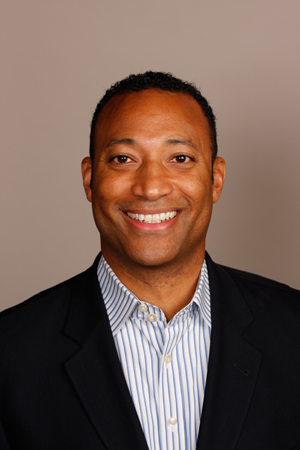Editor’s note: In August, PRSA will celebrate PR Diversity Month by focusing on the diverse communities, people and practices that comprise the public relations profession. We will also be providing advice and insight on how to build a better PR industry through diversity and inclusion. We’ve invited PR practitioners and thought leaders to offer their insights on various diversity and inclusion topics important to the PR profession. Follow the series and join the discussion by using the hashtag #PRDiversity. For more information on Diversity Month activities visit the Diversity Month section of the PRSA site.
How many public relations agencies can say that they have a recruiting strategy to proactively recruit, secure, train and retain ethnically diverse candidates? Many agencies need to widen their search and take a non-traditional approach to get the results that they are looking to achieve. It is a business imperative for diversity that I fear we are not tying to this issue. It’s not about having diversity for diversity’s sake. It is about having a more competitive and better representation of society and our customer/client bases that is the ultimate goal. This can only be achieved with executive leadership teams that look like and think like these stakeholder groups.
While I truly believe that the CEOs of the largest PR firms want to diversify their organizations, they may not be sure what steps to take.
Below are five action items that I believe can change the landscape of your agency:
Create A Welcoming and Diverse Work Environment
A positive corporate culture starts within your company’s walls. By actively utilizing employee resource groups (ERGs), you can create a diverse and inclusive work environment. These ERGs are your ambassadors when a potential candidate considers your company as an employer. All too often what ethnically diverse talent hear about agency life is not positive. A major agency’s company culture is usually described as a sweatshop, provide limited training and development and a reporting structure that includes mid-level managers who hire and only promote those who look like them.
Sustain CEO Commitment
In order for a company’s diversity and inclusion efforts to be successful, there must be commitment at the top. To ensure this happens, CEOs must take the lead and when necessary delegate to the HR team and chief diversity and inclusion officer to carry out the vision. Wells Fargo’s Chairman, President and Chief Executive Officer Jon Stumpf is a great example of embedding diversity and inclusion efforts within the company and getting a total buy-in on all levels. As the chair of Wells Fargo’s Diversity and Inclusion Council, Stumpf holds his direct reports accountable with a “diversity scorecard” to track their progress and also offers comprehensive diversity and inclusion education for team members. The education includes professional and leadership development, mentoring and community involvement opportunities.
Consider Non-Traditional Candidates
Stop “stealing” from the competition. Look at avenues of recruiting other than the usual suspects— your competition around the corner. I often hear from my colleagues that “It’s an easy learning curve if I recruit from my competitors,” or “When I recruit from the ‘client’ side of the business, there is a high level of failure.” You need to ask yourself why that is. It’s most likely due to ineffective training and development or no process is in place at all, i.e. onboarding. Frankly, this is truly an Achilles heal among most, if not, all PR agencies. By creating an effective training and development process, it may help reduce high turnover among ALL candidates: black, white, brown, any color, gender or lifestyle.
Start by first looking into non-traditional majors, like entrepreneurship, theatre or art. You should also consider consulting firms such as, E&Y, BDO and PwC, or sales, marketing, business and advertising firms. They get their talent from us so why not look at their talent? And yes, I can hear some of you now, “We can’t afford to hire them.” They pay more than we do. The number one reason people quit their jobs is because of a bad boss, not money, and that has not changed in the last 30 years or so. This creates a window of opportunity to truly build and sustain your employee base.
Provide Incentives for Diverse Hires
Human resource teams are not equipped to source and recruit ethnically diverse talent. They don’t know where people who look like me are or how to make the case for them to consider the agency world. I strongly believe that you will see a change in behavior by tying compensation for diverse hires to both human resource representatives and senior level hiring managers.
Celebrate Your Talent
Stop being scared of nominating your top talent for awards such as PR Week’s 40Under40, or others for the fear of losing them to your competitors. Your candidates will stay if you have a workforce that is nurturing, supportive, high performing, thoughtful, considerate, challenging, and fun, oh yeah, we have lost the latter–fun!
Kim L. Hunter is the founder and president/chief executive officer of LAGRANT  COMMUNICATIONS, an integrated marketing communications corporation. He has an extensive background instrategic planning and positioning, marketing, crisis management and media relations. Hunter also has an extensive public service background. He was appointed by the Mayor of Los Angeles to both the Cultural Affairs and Animal Services Commissions for the City of Los Angeles, serving a total of seven years. Follow Kim on Twitter @KimLHunter.
COMMUNICATIONS, an integrated marketing communications corporation. He has an extensive background instrategic planning and positioning, marketing, crisis management and media relations. Hunter also has an extensive public service background. He was appointed by the Mayor of Los Angeles to both the Cultural Affairs and Animal Services Commissions for the City of Los Angeles, serving a total of seven years. Follow Kim on Twitter @KimLHunter.







